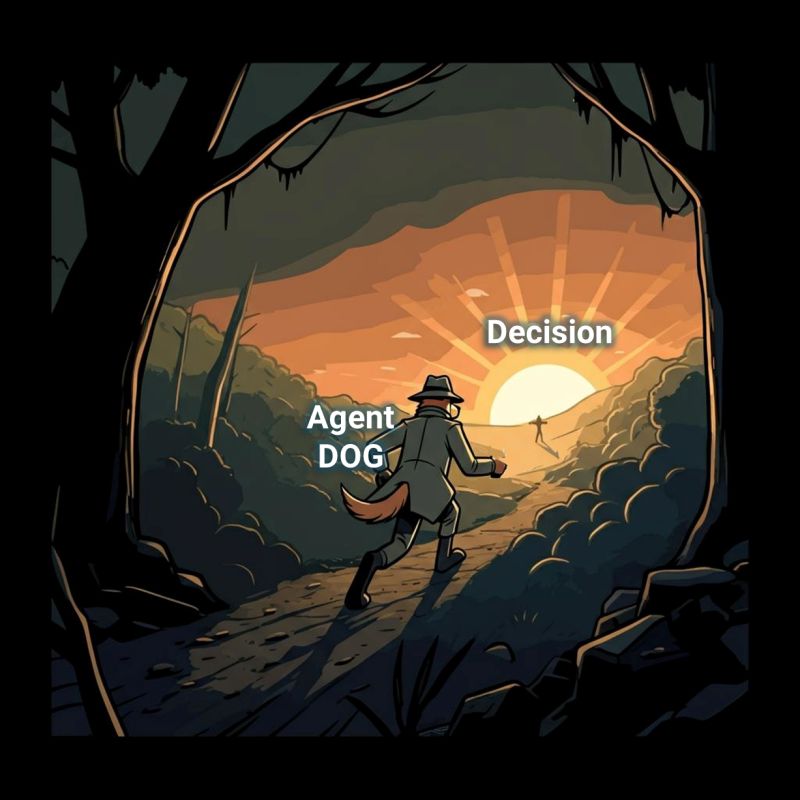Why Simulate Business Processes Before Committing to Change?
When designing bridges, aircraft, or advanced engineering systems, we wouldn’t dream of deploying them without first running simulations. Yet, when it comes to business transformation, we still rely heavily on workshops, theoretical models, and whiteboarding sessions.
That’s where Data Object Graphs (DOGs) come in—allowing businesses to simulate process changes in a safe, controlled environment before rolling them out in production. Instead of guessing, we can try before we buy when making critical business changes.
DOGs as Digital Twins for Business Processes
A Digital Process Twin allows us to:
✅ Model business processes as interactive, executable structures
✅ Simulate how those processes would behave in real-world conditions
✅ Validate potential improvements before implementation
✅ Deploy changes with confidence
Using DOGs, distributed processing, and AI-native integrations, we can create a sandbox for business transformation, where both business and technical teams can interact with processes in a realistic yet risk-free environment.
How It Works: From Idea to Execution
1️⃣ Model the Process – Define the end-to-end business flow using Data Object Graphs (DOGs)
2️⃣ Simulate Execution – Test different scenarios and process variations in a controlled environment
3️⃣ Validate Outcomes – Analyze performance, identify bottlenecks, and optimize before deployment
4️⃣ Deploy with Confidence – Implement only proven process improvements, reducing risk and cost
This approach shifts transformation from hypothetical discussions to interactive, data-driven experimentation.
The Technology Stack: More Than Just a Digital Twin
Creating a true digital twin of a business process requires a sophisticated yet modular tech stack:
🔹 Data Fabric – Ensuring seamless access to all relevant data sources
🔹 Multi-Process Architecture – Managing distributed process simulations
🔹 Shared Memory Spaces – Enabling real-time collaboration between process models
🔹 Data Products – Representing actions, automation, and decision points as executable graph nodes
🔹 AI & LLMs – Providing decision intelligence and adaptability
What has surprised us most is not just the technical effectiveness, but the real-world impact on business teams. Seeing entire processes modeled and iterated in real time—rather than debated in endless whiteboarding sessions—has dramatically accelerated decision-making and execution.
Real-World Benefits: What Makes This Approach Powerful?
🚀 Fail fast, fail cheap – If a process change doesn’t work in the simulation, we’ve lost days—not months.
📉 Reduce operational risk – Changes are tested before impacting real customers or operations.
⏳ Faster transformation cycles – Business and tech teams iterate in real-time instead of waiting for long implementation cycles.
🎯 Confidence in change – Decisions are made based on actual modeled impact, not gut instinct.
Rethinking Business Transformation: The Future is Simulated
The ability to simulate change before committing is a game-changer. Just like engineering simulations revolutionized physical design, Data Object Graphs (DOGs) are redefining business transformation.
Imagine a world where:
✅ You could try out a new operating model before disrupting operations
✅ Your team could experiment with different workflows without fear of failure
✅ Your business could rapidly adapt to market shifts with data-driven confidence
That world isn’t years away—it’s happening now.

💡 Stay tuned—big developments are on the way!
🐶 With Dataception Ltd, it's just a walk in the park!

